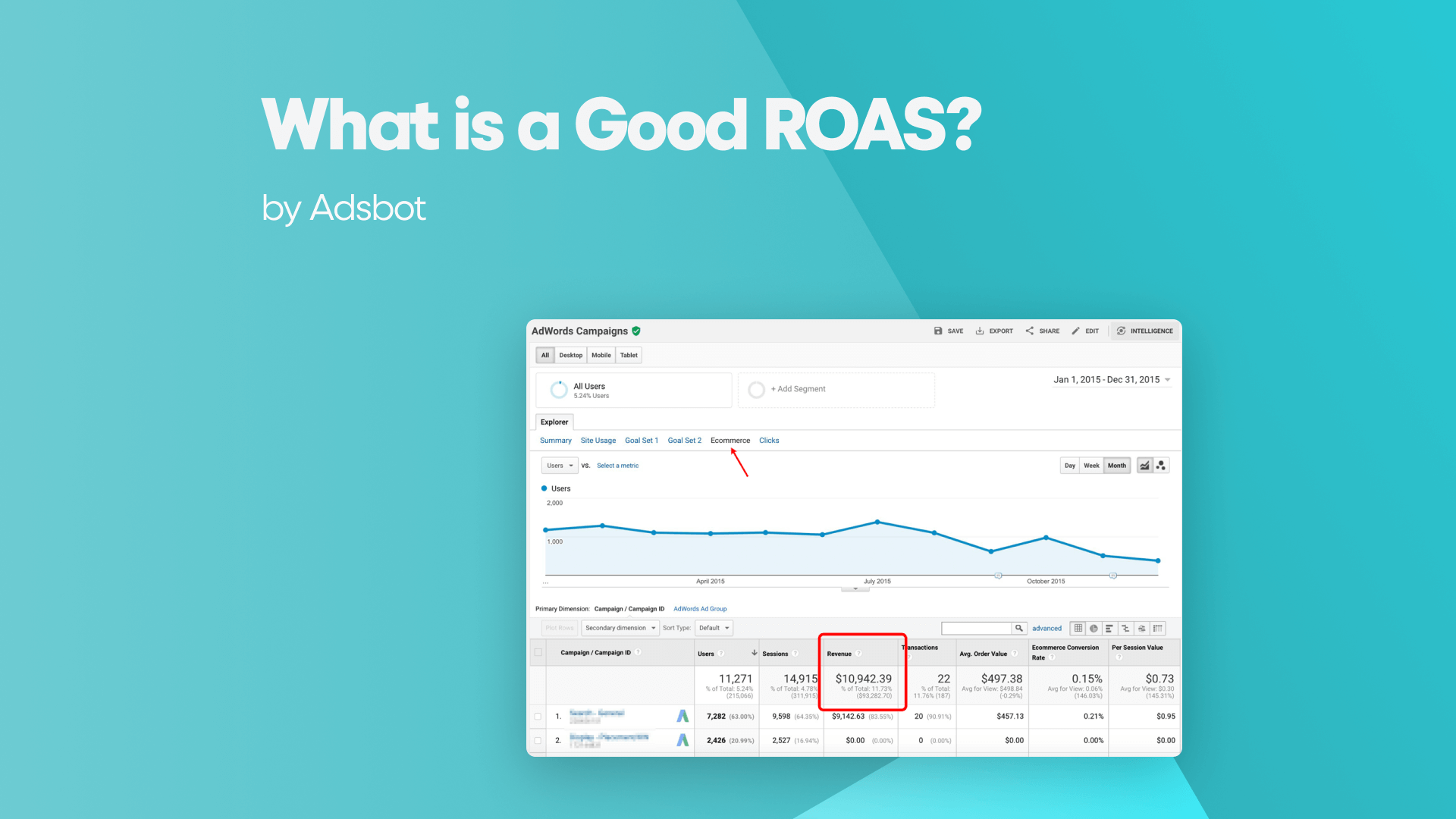To run successful campaigns, advertisers must measure and optimize their return on ad spend (ROAS). In this blog post, you can find what ROAS is and how it’s calculated. Whether you are new to advertising or an experienced marketer, knowing ROAS is vital for driving revenue development and managing your advertising budget.
There is no single method for determining whether a ROAS is good or poor. It depends on a number of variables, such as industry, profit margins, and advertising medium. A company having a larger profit margin compared to a company with a lower profit margin may have a better ROAS. Also, the criteria for what constitutes a successful ROAS may vary among different businesses. Because of the nature of their businesses, companies in the retail sector, for instance, may have a larger ROAS than those in the automobile sector. Moreover, depending on the good or service being advertised, certain channels may perform better than others, which can have an impact on the ROAS.
A good ROAS is typically a 4:1 revenue-to-ad spend ratio.
Grounded on industry standards and benchmarking data, a good ROAS is typically a 4:1 revenue-to-ad spend ratio. Companies aim to generate $4 in ad revenue for every $1 spent on advertising. However, calculating a good ROAS depends on various factors including profitability, industry, and advertising channel. For instance, cash-strapped start-ups may require higher margins, while a big profit margin may allow for a lower ROAS. The average ROAS across all industries is 2.87:1, yet this can vary depending on the company size and industry.
Industry average for a good ROAS is 2.87:1.
The industry average for a good ROAS is 2.87:1. This means that a company can expect to earn $2.87 in revenue for every dollar spent on advertising. While a 4:1 revenue-to-ad spend ratio is often considered a good ROAS, this may not be attainable for all businesses. It is crucial for companies to analyze their profit margins and determine a realistic target ROAS based on their individual goals and constraints. For example, businesses advertising on Amazon typically aim for a ROAS between 3 and 4. Understanding and striving for a good ROAS is essential for maximizing the effectiveness of advertising campaigns and driving revenue growth. Adsbot management tools helps you to check, control and improve your ROAS.
Amazon ROAS is typically between 3 and 4.
ROAS is about 3-4 when it comes to advertising on Amazon. So, for every dollar spent on Amazon ads, the seller may expect to receive $3 to $4 in revenue. Sellers should monitor their ROAS figures for each ad campaign to optimize their results on a regular basis.
The ideal ROAS on Google Ads
The ideal ROAS on Google Ads, according to industry experts, is typically around 4:1 revenue-to-ad spend ratio. The average ROAS for Google Ads is 2:1, but some businesses have seen much higher returns. It’s essential to remember that profitability directly affects the ideal ROAS, and cash-strapped startups may need to aim for a higher ROAS to sustain their business. You can take advantage of Adsbot to maximize your efficiency of advertising and ROAS.
The ideal ROAS on Instagram Ads
The general consensus is that a good ROAS for Instagram Ads would be at least double every dollar committed. It’s significant to note that Instagram’s advertising platform is geared towards visual content and typically performs well for e-commerce businesses, making it a popular advertising channel for those looking to drive sales. However, it’s worth testing and refining your strategies to see what works best for your particular business and goals.
The ideal ROAS on Linkedin Ads
A good ROAS on Linkedin typically falls between 2:1 to 4:1 ratio. To achieve a high ROAS on Linkedin, it is essential to create engaging and relevant sponsored content that resonates with the audience. This can include personalised messages, eye-catching visuals, and strong calls-to-action. Consistently tracking and analyzing campaign data can also help optimize ad performance and improve ROAS over time. As with any advertising channel, it is critical to tailor the approach to the unique requirements and characteristics of your business and target market. When you have an Adsbot audit tool, you can avoid wasting time and money. You can notice early what you need to do for well-optimized ads.
The ideal ROAS on Tiktok Ads
A good ROAS on this platform is typically around 2:1 to 3:1. Yet, due to Tiktok being a relatively new advertising channel, there isn’t as much data available to determine an industry standard for ROAS. As with any advertising platform, it’s important to regularly track and analyze your ROAS to ensure that your ad campaigns are driving efficient return on investment.
What is a Good ROAS on Amazon
A good Return on Ad Spend (ROAS) on Amazon typically depends on various factors, including your industry, product margins, and advertising goals. Generally, a ROAS of 4:1, meaning for every $1 spent on ads, you generate $4 in revenue, is considered a solid benchmark. However, this can vary significantly. Higher ROAS figures indicate more efficient ad spending and better profitability. For products with high margins, a lower ROAS might still be profitable, while products with lower margins might require a higher ROAS to be financially viable. It’s essential to analyze your specific business context and adjust your ROAS goals accordingly.
Popular Posts
-
How Many Keywords Should Be In an Ad Group in Google Ads?
Ever wondered if your Google Ads campaigns are packed with…
Read more -
Google Ads Script for Dummies: An Introduction
Imagine you have an e-commerce website that sells licensed superhero…
Read more -
Google Ads Sitelink Character Limits
Your Google Ads are cutting off in the middle of…
Read more -
What Is Conversion Value in Google Ads?
What if you could put a price tag on every…
Read more
Register for our Free 14-day Trial now!
No credit card required, cancel anytime.





